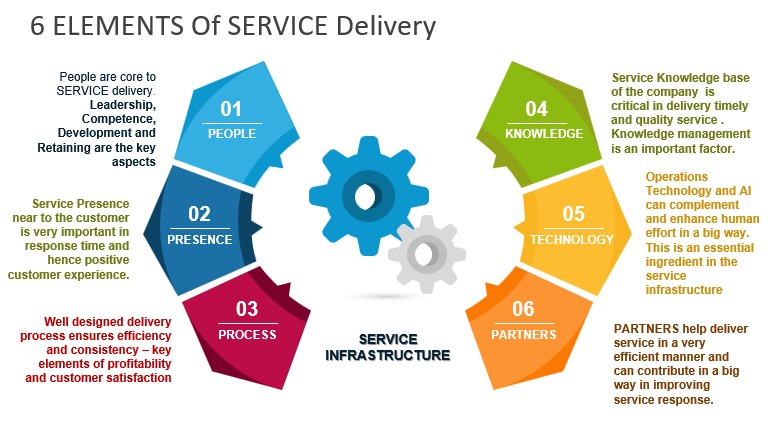
Maximising After Sales Service Satisfaction: The Role of Service Infrastructure
Published :Feb 2023
In business, working capital is like fuel for a vehicle. Picture setting off on a road trip with friends or family, only to find yourself stranded because you ran out of gas. Now, imagine that same scenario at a much larger scale: a major company stalled because it lacks the cash to keep operations going. The impact is huge, disrupting not only the business but also affecting employees, suppliers, and even customers who rely on it.

Connectivity and AI have a big impact on the way service is delivered today. Remote monitoring, maintenance and operational analytics is making possible for service providers to evaluate equipment performance, review the issues and take corrective actions before an equipment failure.
Augmented reality, Virtual reality and Mixed reality technologies are being used today for efficient service delivery. With real-time visibility, the after-sales service delivery teams can monitor events as they are happening. Remote assistance also increases time efficiency by creating Omni-channel support and helps in reducing friction in the service experience.
WIPRO, a leading technology company says, “Connected assets will lead the manufacturing of tomorrow”. Wipro’s cloud based IoT platform helps connect over 10,000 JCB construction equipment in India to remotely monitor the health and performance of the assets in the field.
Alfa Laval the Swedish engineering MNC has successfully adopted remote assistance / guidance to its customers in equipment trouble shooting and servicing.
Hence, competent service partners who are equipped to respond quickly and provide quality service are an essential element in the service infrastructure.
Service partners bring the required skills, resources, and knowledge to support the business’ existing service offerings. Here are three ways how service partners boost a business’ service infrastructure:
-
Capacity increment : Service providers increase the capacity of the business to handle more customers with their after sales requirements. They deliver quality service by expanding their reach and also supplement with additional resources like technology and remote manpower. Expertise provision : Service partners have specialised knowledge that improves the service offering. They help businesses react quickly, adapt to new technologies and streamline operations.Improves flexibility and customer experience : With service partners, customers get services as per their exact requirements, irrespective of the location. This not only helps better customer experience but also helps the business stay ahead of the competition by delivering better-than-usual services.
The set of beliefs, values and practices adopted by an organisation plays a role in determining the organisation’s success. Having a positive service culture with a strong team creates a productive, supporting, and engaging work environment for employees. This leads to improved customer satisfaction and loyalty.
Organisations that invest in the development and maintenance of a strong service culture reap the benefits of reduced staff turnover, reduced costs, higher efficiency, and enhanced profits. To foster a culture of service excellence, organisations must focus on providing regular training and support, transparent communication, and empowering employees to keep providing incredible customer service by responding to customer needs promptly and showcasing the willingness to move the extra mile to fulfil customer’s needs – irrespective of their geographical location.
For more discussions on consultation on this topic, please connect with anantha.padmanabhan@camsconsulting.in / www.camsconsulting.in
- Common Myths About Industrial Equipment After-Sales Service
- Managing Receivables: An Essential Element of Working Capital
- The Hidden Cost of Running Out of Working Capital
- Listening to the Voice of Customer: An Art or a Science?
- International Companies- Leveraging opportunities in the Indian market for Engineering Equipment.
- Unlocking Success: 10 Strategies to Enhance Sales Force Performance
- Leveraging Opportunities in India- Manufacturing
- Maximising After Sales Service Satisfaction: The Role of Service Infrastructure
- Business amidst COVID 19- The way forward for the MSME Sector
- How good is your ‘Service Reach’?
- Aftersales Service – a game changer for engineering equipment manufacturers